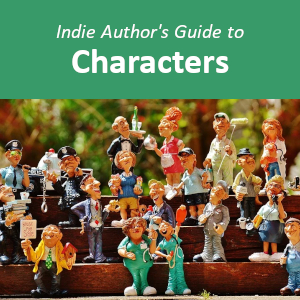To convey a story and the characters’ feelings to the reader, authors have two primary approaches: narrative and dialogue. Thus, in order to write a book that is enjoyable to read, authors must strike a proper balance between these two literary techniques. Additionally, when incorporating dialogue into a story, it is important for authors to make the dialogue realistic, clear and consistent for each character. This guide will consider when an author might want to employ dialogue instead of narrative, will explain proper punctuation within dialogue, and will provide suggestions to improve dialogue. If you are an author looking to enhance the dialogue in your book, you will no doubt find the following information to be very beneficial.
Narrative vs. Dialogue
It has been estimated by some that modern fiction writers should aim for approximately fifty percent dialogue and fifty percent narrative. While this suggestion should be taken with a grain of salt, it is important for authors to alternate their use of dialogue and narrative. Here are some instances where it may be better to employ one over the other.
| INSTANCE | NARRATIVE VS. DIALOGUE |
|---|---|
| Aesthetics | Rarely do readers want to read page after page of solid block text. Back and forth dialogue that goes on for too long can also become overwhelming to a reader. Therefore, at times it may be best to include some narrative or dialogue simply to break up the visual aesthetic of the page. |
| Information Dumps | Though many readers complain about them, authors continue to include information dumps in their books as an easy way to share a lot of information with the reader in a short period of time. While info dumps can actually be used successfully in metered amounts, when these necessary details are spread out or introduced by means of dialogue, the overall reader experience may be enhanced. However, authors must be careful not to misuse expository dialogue when conveying such information. |
| Pacing | Dialogue tends to be more engaging to a reader, so if a portion of the story feels dragged down by too much narrative, incorporating some dialogue into a scene will pick up the pace. |
| Passing Time | When an extended period of time, whether it be a day or a decade, passes without much happening to the characters, it is generally best to detail that to readers through narrative. |
| Scenery | While a character may verbalize the scenery in a scene, it is far more reasonable for the author to narrate the setting to the reader. |

Types of Dialogue
There are a number of different types of dialogue that authors need to be aware of, and each of these types may have different formatting. Here are the most common types of dialogue, along with tips for formatting them correctly.
| TYPE | DESCRIPTION | FORMATTING |
|---|---|---|
| Conversational Dialogue | Conversational dialogue is the most common type of speech seen in books, and it is used when a character is speaking to one or more other characters. | Conversational dialogue should be included in quotation marks and dialogue tags may be needed so that readers know who is speaking. |
| Internal Dialogue | Internal dialogue conveys what a character is thinking. | Internal dialogue is not enclosed in quotation marks unless the character is saying aloud what they are thinking. Some authors choose to italicize internal dialogue, but this is not necessary. |
| Digital Dialogue | By means of technology, characters may converse through texting, messaging, or other digital means. | Some authors enclose this type of conversation in quotation marks, many others italicize the speech, and a few authors use special formatting to indicate digital dialogue. There isn’t a set rule, however authors should ensure that their manner of writing digital dialogue is consistent. |
| Other Dialogue | From telepathy to sign-language, there are a wide variety of other types of dialogue that can be found in literature. | Like digital dialogue, there is no set rule for conveying other various types of speech in books, but it is important for authors to stick to a specific style of formatting when these conversations are used. |

Speech Patterns
Whether it is to add variety, quirkiness, or authenticity to characters, authors include a variety of speech patterns in the dialogue. Speech patterns can enhance the dialogue of a book, but they can also become a detriment if not used proficiently. Here are a few common styles of speech along with some reasons why you might want to use, or not use, each one in your book.
| STYLE | DESCRIPTION | EXAMPLE |
|---|---|---|
| Colloquialisms | Colloquialisms are words or phrases that are based on geographical and social regions. It is important for authors to use colloquialisms accurately because it gives characters credibility. | “I’d like a soda.” vs. “I’d like a pop.” vs. “I’d like a soft drink.” |
| Formal | Formal speech, which is recognized by a lack of contractions and uncommon but precise word choices, may be a distinction for a specific character or group, but more often dialogue should be written in conversational speech that mimics the way readers actually speak. | “Are you certain that you do not wish to go shopping at the store?” vs. “Are you sure you don’t want to go to the store?” |
| Idioms | Idioms are phrases that, literally speaking, don’t mean what they are saying. These phrases are often language or dialect-specific, and using them appropriately can add realism to your characters’ conversations. | “When I won the award, I was on cloud nine.” |
| Jargon | Jargon refers to technical terms used by people of a specific profession or group of people. While a moderate amount of jargon gives educated characters authenticity, too much of it can detach readers from a story. | The doctor said, “Give him a sublingual to treat his acute hypertension.” |
| Slang | While some characters may use limited slang, authors should keep in mind that slang terminology changes quickly and can make a book feel dated. | “Hey, ‘sup dude. Your new lid is da bomb.” |
| Stereotypes | Authors are encouraged not to rely on stereotypes in dialogue, especially negative stereotypes that may be viewed as detrimental or even offensive. | “Me from [insert country here]. Me no speaka the English.” |
| Verbal Interjections | In real conversations, you no doubt hear the words “uh”, “umm”, “so”, etc. used as interjections very frequently. In written dialogue, however, these words tend to disengage readers from the flow of the book. Therefore, unless you are using them to highlight a character’s extremely casual style of speaking, these verbal interjections should be minimized or avoided altogether. | “So, uh… I umm have this like, question for you.” |

Dialogue Tags
Dialogue tags are an important aspect of writing dialogue. Tags are used to let readers know who is speaking. Authors need to understand the various tag options, and need to employ them correctly. The following list of dialogue tags is, generally speaking, arranged from the most commonly seen in fiction to the least.
| DIALOGUE TAG | DESCRIPTION | EXAMPLE |
|---|---|---|
| No Dialogue Tag | Often, readers are able to discern who is speaking by context and no dialogue tag is needed. This is especially true when only two characters are having a back-and-forth conversation. | “This guide is amazing.” |
| Action Instead of Dialogue Tag | Rather than using a dialogue tag, a common way to indicate who is speaking is to state an action right before or after the dialogue. | “This guide is amazing.” He continued reading. |
| Said | Said is the most common dialogue tag, and authors should not shy away from using it frequently. | “This guide is amazing,” he said. |
| Asked, Muttered, Whispered, Shouted, etc. | Alternatives to said should be used when necessary to convey a different style of speaking or emotion, but authors should be careful not to use them excessively or incorrectly. | “This guide is amazing,” he whispered. |
| Dialogue Tag with Adverb | Including adverbs to dialogue tags can make dialogue more vibrant, but again, authors should be careful not to use adverbs excessively. | “This guide is amazing,” he said happily. |

Punctuation
For those that don’t remember everything they learned in English class, it can be easy to make punctuation mistakes when writing dialogue. Here are a few reminders that will help you to properly format the dialogue in your book.
| DIALOGUE TYPE | PUNCTUATION RULES | EXAMPLES |
|---|---|---|
| Indirect Dialogue | Indirect dialogue details what was said without anyone actually saying it. This type of dialogue is actually narrative in disguise and should not feature quotation marks at all. | He said this explanation of dialogue was very helpful. |
| Independent Dialogue | Dialogue written without additional content should be written in quotation marks, with the closing sentence punctuation included before the final quotation mark. | “This explanation of dialogue is very helpful.” |
| Introductory Tags | When dialogue is introduced by a dialogue tag, a comma should precede the first quotation mark and the dialogue should begin with a capital letter. | He said, “This explanation of dialogue is very helpful.” |
| Concluding Tags | When dialogue is concluded with a dialogue tag, periods should be replaced by commas and the capitalization of the tag should not be altered. | “This explanation of dialogue is very helpful,” he said. |
| Concluding Tags Exceptions | When dialogue is concluded with a dialogue tag, punctuation, such as question marks and exclamation points, should not be replaced by commas. | “This explanation of dialogue is very helpful!” he said. |
| Tags Within Dialogue | When dialogue is broken up by a dialogue tag, commas are used before and after the dialogue tag. | “This explanation of dialogue,” he said, “is very helpful.” |
| Actions | Unlike dialogue tags, actions that constitute a complete sentence in themselves do not affect the punctuation of dialogue. | “This explanation of dialogue is very helpful.” He smiled. |
| Dialogue Paragraph Spacing | A paragraph break should separate each speaker. It would be confusing to readers if you were to include dialogue from two speakers in the same paragraph. | She asked, “Do you like this explanation of dialogue?” “This explanation is very helpful,” he said. |
| Monologue Paragraph Spacing | If a single speaker’s monologue continues for more than one paragraph, the closing quotation marks are not included at the end of the first paragraph, but are used at the start of the next. | “… and this explanation of dialogue is very helpful. “I especially like the information about punctuation rules…” |
One final tip for writing believable dialogue is for authors to read aloud each conversation after they write it. This allows them to not only verify that each character’s speech is consistent with their personality, but also assures them that the dialogue’s cadence and flow are natural. By giving appropriate attention to the dialogue in their books, authors will bring their characters to life. Dialogue that is authentic and meaningful creates characters and conversations that are memorable to readers and truly enhances a book’s prose.
YOU MIGHT ALSO LIKE








